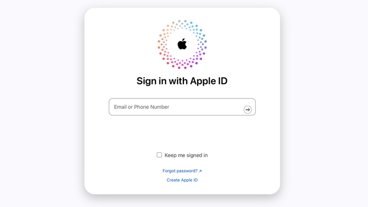Apple iAd plans to eat up half the mobile ad market
Rather than focusing on earning ad revenues, Apple plans to use iAd as a program to incentivize App Store development.
“iAds will reach millions of iPhone and iPod touch users," the company's chief executive Steve Jobs said, "a highly desirable demographic for advertisers." He also said iAds would "provide developers a new way to earn money so they can continue developing free and low cost applications.â€
Jobs listed a variety of leading brands who have already signed commitments of more than $60 million of ads over the next six months, including AT&T, Best Buy, Campbell Soup Company, Chanel, Citi, DirecTV, GEICO, GE, JCPenney, Liberty Mutual Group, Nissan, Sears, State Farm, Target, Turner Broadcasting System, Unilever and Walt Disney Studios.
Based on a JP Morgan report forecasting the size of the mobile ads market, that gives Apple nearly half of the emerging market for mobile apps right out of the gate, even though iAds will only appear on Apple's iOS devices running the latest version 4, which will become available June 21.
Making it easy for developers to add iAd
The new iOS 4 release incorporates integrated support for the new iAd program, making it easy for developers to add support for the iAd banners and their self-contained HTML5 websites.
The core feature of iAd is that when users click a banner, it launches an HTML5 ad environment within the developer's app. When the ad is closed, it drops users back to the app they were using rather that leaving them at an external website. Apple hopes this design will result in more effective advertising that developers are more interested in including in their apps.
The iAd banners and web-based advertisements are created using Apple's new iAd JS, a JavaScript library that is part of iOS 4, designed to enable ad designers to create rich media assets in a bundle that acts as a self contained website. The new iOS can present iAd bundles saved as part of a developer's app or dynamically load them from Apple's servers, presenting users with a rich branding environment that advertisers hope will attract user interaction as a carrot, rather than beating viewers with the stick of flashy, intrusive ads.
Apple provides a package of iAD JS core files, sample media and assets, as well as an iAdTester app for loading iAd bundles to preview how they work. The iAd bundles sync over to the test app using iTunes app File Sharing, much like the documents files of iWork apps. The iAd bundles themselves are built using modern web standards, and can present any media or interaction designers can imagine.
On stage at WWDC, Jobs demonstrated an iAd campaign under development by Nissan to promote its new Leaf electric car. The iAd launches a short video the leads into a simple navigation selector, which presents the ability to register for more information, a sweepstakes entry to win a new car, and includes a variety of interactive visuals that demonstrate the selling points of the new vehicle.
iAd gives Apple a new market
Apple's development of iAd, based on the company's acquisition of the Quattro Wireless ad network, is described by Apple as being simply a way to enable its developers to monetize their apps, making it more feasible to offer free or low cost software for the iOS platform. At the same time, the new program seems to be a defensive strategy to prevent the mobile ad market from falling to Google, which is now an iPhone competitor with its rival Android platform.
By offering its own ad network, Apple can make sure that Google doesn't promote its own Android platform at the expense of the iOS. Google's AdMob subsidiary has already begun promoting the idea that a larger percentage of its ad requests come from Android devices, suggesting that the Android platform is larger than Apple's iOS installed base, without that actually being the case even in the US.
iAd is also a defensive posture in an industry that has grown heavily dependent upon Adobe's Flash Professional for developing interactive and animated ads. By creating its own advertising program welded directly to the iOS and requiring that all ad content be built using HTML5, Apple is leveraging the value of its mobile platform and developer interest to support HTML5.
Apple's aggressive marketing of advertising commitments from leading brands means that $60 million will be funneled back into the App Store and the developers who create software for the iPhone, iPod touch and iPad, rather than spreading mobile advertising across the apps of other mobile platforms.
This strategy is parallel to iTunes and the iTunes Store itself, which Apple created and maintains not as a major profit center, but as a mechanism for facilitating compatible media and software for its mobile platforms while also directing the revenues they generate to add value to the iPod and iOS platforms.
 Prince McLean
Prince McLean










 Mike Wuerthele
Mike Wuerthele

 Malcolm Owen
Malcolm Owen
 Chip Loder
Chip Loder

 William Gallagher
William Gallagher
 Christine McKee
Christine McKee
 Michael Stroup
Michael Stroup






